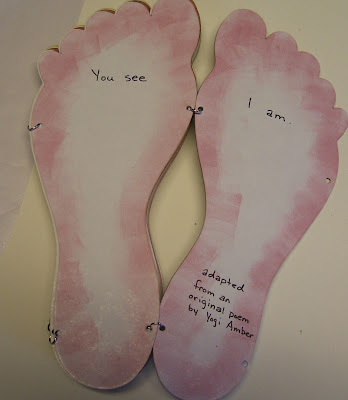I've been working on some new books lately. My art journaling group meets once a month and we take turns introducing a new technique or binding form. Jan VanFleet hosted in June and showed us an interesting way to create pages for an accordion book.
We were given a 30" x 22" sheet of Stonehenge Printmaking paper, which we decorated randomly with acrylic inks, paints or our own choice of medium. Masking tape was used to save spaces on the pages for text. By placing the masking tape randomly before we used our inks, we ended up with a unique and interesting placement for the text when our pages were cut up and pasted together.
I made three of these books. For my first effort I used pan pastels, versamark and a poppy stamp to decorate my pages. I used mulberry paper to decorate the cover of the book.
Here are some pictures of that experiment:
I used a Maya Angelou poem for my text.
For my next effort I decided to use a different closure for my book. The original example used ribbons tied in bows on both sides of the cover. I decided to go for a more traditional look:
I have an old belt made from those suede loops and they make useful closures. I glued the ribbon inside the back cover and it loops around to close in front. I decorated these pages with acrylic inks and used masking tape (my picture seems to have disappeared) It it very vibrant. In fact, it looked much better once the pages had been cut down to size than it did in its 30" x 22" size. I was really thinking (this is a mess, I wonder what I'll do with it)
This is a paste paper cover. I made this paper more than a year ago and finally found a use for it. I didn't use masking tape on the interior pages and the ink was so bright that I needed to create my text on separate cardstock and then add it to the book. This helped to tone down the colour.
I used a large button as my closure and simply wrapped the ribbon around it, to secure the book.





















































